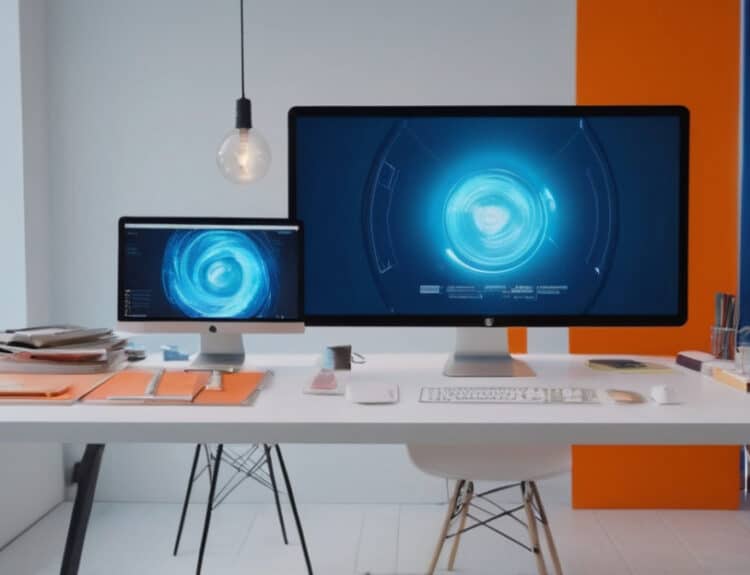Introduction
Creating a compelling freelance artist portfolio is crucial for attracting clients and securing projects. But what exactly do clients look for when browsing through portfolios? In this article, we’ll delve into the key elements that can make your portfolio stand out, ensuring you present yourself as the ideal candidate for any creative job.

Understanding Your Audience
Before you start compiling your portfolio, it’s essential to understand your target audience. Who are the clients you want to attract? Are they looking for illustrators, graphic designers, or digital artists? Tailoring your portfolio to meet the specific needs and expectations of your desired clientele can significantly increase your chances of landing projects.
Research the industries you want to work in and study the portfolios of successful freelancers in those fields. This will give you insight into what clients in those industries are looking for and how you can present your work to meet those expectations.
Showcasing Your Best Work
A common mistake freelancers make is including too many pieces in their portfolio. Clients are more likely to be impressed by a carefully curated selection of your best work rather than an overwhelming number of examples. Choose pieces that showcase your skills, creativity, and versatility.
Ensure that each piece in your portfolio has a purpose and demonstrates a particular skill or style. This not only highlights your strengths but also keeps your portfolio focused and professional.
Highlighting Your Unique Style and Voice
Clients are often looking for artists who have a distinctive style or voice that sets them apart from others. Your portfolio should reflect your unique artistic identity. Whether it’s your use of color, your line work, or your thematic approach, make sure your personal style is evident throughout your portfolio.
Consistency is key. While it’s important to show versatility, maintaining a coherent style helps clients understand what they can expect from you. This can be particularly appealing to clients looking for a specific aesthetic for their projects.

Providing Context for Your Work
Don’t just show your work; provide context that explains the story behind each piece. Include brief descriptions that outline the project’s goals, your role, the challenges you faced, and how you overcame them. This not only showcases your skills but also demonstrates your problem-solving abilities and your understanding of project requirements.
Case studies or project breakdowns can be particularly effective. They give clients a deeper insight into your creative process and highlight your ability to deliver results.
Including Client Testimonials and Reviews
Client testimonials and reviews can add a significant amount of credibility to your portfolio. Potential clients are more likely to trust you if they see positive feedback from your previous clients. Include a section in your portfolio dedicated to testimonials and reviews.
Make sure the testimonials are specific and highlight different aspects of your work – from your creativity and technical skills to your professionalism and reliability. This can reassure potential clients that you are capable of meeting their needs and delivering high-quality work.

Demonstrating Your Range of Skills
While maintaining a consistent style is important, clients also appreciate seeing a range of skills. Include examples that demonstrate your ability to work in different mediums, styles, and subjects. This shows that you are a versatile artist who can adapt to various project requirements.
For instance, if you are a digital artist, include pieces that showcase your skills in illustration, graphic design, and animation. This not only broadens your appeal but also opens up more opportunities for diverse projects.
Keeping Your Portfolio Up-to-Date
An outdated portfolio can be a red flag for potential clients. Regularly update your portfolio with your latest and best work. This shows that you are active in your field and continuously improving your skills.
Remove older pieces that no longer represent your current skill level or style. A fresh and up-to-date portfolio indicates that you are engaged and committed to your craft.
Optimizing Your Portfolio for Different Platforms
In today’s digital age, your portfolio should be easily accessible across different platforms. Ensure that your portfolio is optimized for both desktop and mobile devices. A responsive design ensures that potential clients can view your work seamlessly, regardless of the device they are using.
Additionally, consider having both an online portfolio and a downloadable PDF version. This provides flexibility for clients who may prefer one format over the other.

Making It Easy to Contact You
No matter how impressive your portfolio is, if clients can’t easily contact you, you could be missing out on opportunities. Ensure that your contact information is easily accessible. Include a contact form, email address, and links to your social media profiles.
Consider adding a call-to-action at the end of your portfolio, inviting potential clients to get in touch. This can encourage them to take the next step and reach out to you for their projects.
Conclusion
Creating an effective freelance artist portfolio involves more than just showcasing your artwork. By understanding what clients are looking for and tailoring your portfolio to meet those expectations, you can significantly increase your chances of landing projects. Remember to showcase your best work, highlight your unique style, provide context for your pieces, include client testimonials, demonstrate a range of skills, keep your portfolio up-to-date, optimize it for different platforms, and make it easy for clients to contact you.
By following these insider tips, you’ll be well on your way to creating a portfolio that not only stands out but also attracts the right clients for your freelance business.






